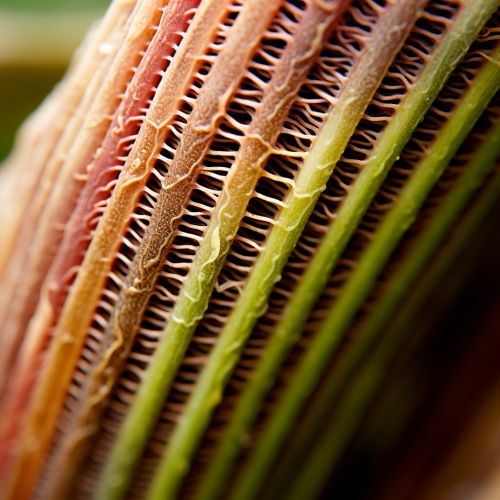Plant anatomy
Introduction
Plant anatomy, also known as phytotomy, is the general term for the study of the internal structure of plants. Originally it included plant morphology, the description of the physical form and external structure of plants, but since the mid-20th century plant anatomy has been considered a separate field referring only to internal plant structure.
Plant Cells
Plant cells are typically distinguished by their large water-filled central vacuole, chloroplasts, and rigid cell walls that are made up of cellulose, hemicellulose, and pectin. Plant cells are eukaryotic, meaning they have a nucleus. They also contain a variety of other organelles such as mitochondria and ribosomes that are common to all eukaryotic cells.
Cell Wall
The cell wall in plants is composed mainly of cellulose and contains three layers in many plants. It is a characteristic feature that distinguishes the classes of fungi and plants from all other cellular life forms.
Chloroplasts
Chloroplasts are organelles, specialized subunits, in plant and algal cells. Their discovery inside plant cells is usually credited to Julius von Sachs, an influential botanist and educator of the 19th century.
Tissues
Plant tissues come in several forms: vascular, epidermal, ground, and meristematic. Each of these plays a crucial role in the life of the plant, and the function of each is dependent on the others.
Vascular Tissue
Vascular tissue is a complex conducting tissue, formed of more than one cell type, found in vascular plants. The primary components of vascular tissue are the xylem and phloem.
Epidermal Tissue
The epidermal tissue system protects the plant from water loss, aids in gas exchange, secretes metabolic compounds, and absorbs water and mineral nutrients.
Ground Tissue
The ground tissue system makes up the majority of a plant and includes three types of tissues: parenchyma, collenchyma, and sclerenchyma.
Meristematic Tissue
Meristematic tissue is made of cells that are capable of cell division and growth. They are found in various parts of the plant such as the tip of the stem, the tip of the root, and the cambium.
Plant Organs
Plants have a variety of organs, including roots, stems, and leaves. All these organs are made up of cells that are specialized for their roles and arranged in a way that helps the plant function as a whole.
Roots
The root of a plant are usually below the surface of the soil. They have three major functions: absorbing water and minerals from the soil, anchoring the plant to the ground, and storing food.
Stems
The stem is one of the main structural axes of a vascular plant. It bears leaves, flowers, and fruits, serves as a conduit for water, minerals, and sugars, and may also store food or be photosynthetic itself.
Leaves
Leaves are the primary photosynthetic organs of a plant. They are typically flat and thin, which allows for the penetration of light and also increases the surface area for photosynthesis.
Conclusion
Understanding plant anatomy is crucial for the study of plant biology, as it plays a crucial role in the life processes of plants. It is through the study of plant anatomy that we understand how plants function, how they are structured, and how they adapt to their environment.
See Also


